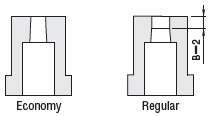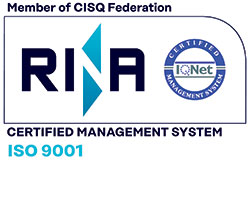BUTTON DIES
| Button die type | Material | Type | Shank dia. tolerance |
Normal | Scrap retention | Non-clogging | ||
|---|---|---|---|---|---|---|---|---|
| Round | Shaped | Round | Shaped | Round | ||||
| Headed | ||||||||
 |
D2 Equivalent | Regular type |
Dm5 | MHD | HD□ | SR-MHD | SR-HD□ | SV-MHD |
D |
A-MHD | A-HD□ | SRA-MHD | SRA-HD□ | ||||
| Economy type |
Dm5 | EMHD | EHD□ | SR-EMHD | SR-EHD□ | |||
D |
A-EMHD | A-EHD□ | SRA-EMHD | SRA-EHD□ | ||||
| Powdered high-speed steel |
Regular type |
Dm5 | PMHD | PHD□ | SR-PMHD | SR-PHD□ | SV-PMHD | |
D |
A-PMHD | A-PHD□ | SRA-PMHD | SRA-PHD□ | ||||
| Economy type |
Dm5 | EPMHD | EPHD□ | SR-EPMHD | SR-EPHD□ | |||
D |
A-EPMHD | A-EPHD□ | SRA-EPMHD | SRA-EPHD□ | ||||
| Straight | ||||||||
 |
D2 Equivalent | Regular type |
Dn5 | MSD | SD□ | SR-MSD | SR-SD□ | SV-MSD |
D |
A-MSD | A-SD□ | SRA-MSD | SRA-SD□ | ||||
| Economy type |
Dn5 | EMSD | ESD□ | SR-EMSD | SR-ESD□ | |||
D |
A-EMSD | A-ESD□ | SRA-EMSD | SRA-ESD□ | ||||
| Powdered high-speed steel |
Regular type |
Dn5 | PMSD | PSD□ | SR-PMSD | SR-PSD□ | SV-PMSD | |
D |
A-PMSD | A-PSD□ | SRA-PMSD | SRA-PSD□ | ||||
| Economy type |
Dn5 | EPMSD | EPSD□ | SR-EPMSD | SR-EPSD□ | |||
D |
A-EPMSD | A-EPSD□ | SRA-EPMSD | SRA-EPSD□ | ||||
| Angular, headed | ||||||||
 |
D2 Equivalent | Regular type |
Dm5 | AHD | AHD□ | SR-AHD | SR-AHD□ | |
D |
A-AHD | A-AHD□ | SRA-AHD | SRA-AHD□ | ||||
| Powdered high-speed steel |
Dm5 | PAHD | PAHD□ | SR-PAHD | SR-PAHD□ | |||
D |
A-PAHD | A-PAHD□ | SRA-PAHD | SRA-PAHD□ | ||||
| Angular, straight | ||||||||
 |
D2 Equivalent | Regular type |
Dn5 | ASD | ASD□ | SR-ASD | SR-ASD□ | |
D |
A-ASD | A-ASD□ | SRA-ASD | SRA-ASD□ | ||||
| Powdered high-speed steel |
Dn5 | PASD | PASD□ | SR-PASD | SR-PASD□ | |||
D |
A-PASD | A-PASD□ | SRA-PASD | SRA-PASD□ | ||||
| Long shaped hole, headed | ||||||||
 |
D2 Equivalent | Regular type |
Dm5 | MHDS | HD□S | |||
| Long shaped hole, straight | ||||||||
 |
D2 Equivalent | Regular type |
Dn5 | MSDS | SD□S | |||
| Configurable full length, headed | ||||||||
 |
D2 Equivalent | Regular type |
Dm5 | S-MHD S-MHDS |
S-HD□ S-HD□S |
SRS-MHD SRS-MHDS |
SRS-HD□ SRS-HD□S |
|
| Configurable full length, straight | ||||||||
 |
D2 Equivalent | Regular type |
Dn5 | S-MSD S-MSDS |
S-SD□ S-SD□S |
SRS-MSD SRS-MSDS |
SRS-SD□ SRS-SD□S |
|
| Configurable size; full length, shaped hole depth, and relief hole specified; headed | ||||||||
 |
D2 Equivalent | Regular type |
Dm5 | FMHD FMHDS |
FHD□ FHD□S |
SR-FMHD SR-FMHDS |
SR-FHD□ SR-FHD□S |
|
| Configurable size; full length, shaped hole depth, and relief hole specified; straight | ||||||||
 |
D2 Equivalent | Regular type |
Dn5 | FMSD FMSDS |
FSD□ FSD□S |
SR-FMSD SR-FMSDS |
SR-FSD□ SR-FSD□S |
|
| Dowel slot | ||||||||
 |
D2 Equivalent | Economy type |
Dn5 | EKSD | EKD□ | SR-EKSD | SR-EKD□ | |
| Regular type |
KSD | KD□ | SR-KSD | SR-KD□ | ||||
| Tilting, dowel slot | ||||||||
 |
D2 Equivalent | Regular type |
Dn5 | KSDS | KD□S | |||
| For flame hardening, dowel slot | ||||||||
 |
SX105V | Regular type |
Dn5 | HKSDS | HKD□S | |||
MACHINING GUIDE FOR BUTTON DIES
■Difference between economy type and regular type

●The regular type includes the straight shaped hole section B (2 mm), while the economy type does not. For
this reason, alteration PKC (shaped hole diameter tolerance change) cannot be used for the economy type.
■Concerning shaped hole depth b and alteration LC (full length change)

●With headed types, because a head thickness is set, LC machining is performed from the button die shaped hole,
reducing the shaped hole depth b. With a regular type, the straight section B remains 2 mm, however if b- (L-LC) <2
then B=b- (LLC). In this case, the tapered part 1  disappears.
disappears.

●With a straight type, because LC machining is performed from the relief hole direction, shaped hole depth
b remains unchanged.
(The same applies to alterations CKC and MKC.)
■Indication of button die relief angles

 indicates a taper in which the diameter increases by 1 mm over 50 mm
of length.
indicates a taper in which the diameter increases by 1 mm over 50 mm
of length.
| Taper | 1/50 | 1/100 | 1/150 |
|---|---|---|---|
| Angle (A°) | 1.146° | 0.573° | 0.382° |
■Button die L dimension and P•W spread

■Scrap retention button dies (For details,  click
here)
click
here)
With scrap retention button dies, 2 or more slanted grooves are machined on the inner surface of the die. The
scrap initially punched out during the punching process forms small projections along the slanted grooves in the die.
When the punching process pushes this scrap farther down to the bottom, the projections become compressed by the sides
of the die ("ironing" effect), preventing scrap lifting from occurring. ●Applicable range
1.Hole diameter: φ1.0~φ16
2.Workpiece material: Can be used up to a maximum tensile strength of 120kgf/mm2 (1177N/mm2).
3.Thickness of workpiece materials: Minimum thickness 0.15 mm
4.The scrap retention effect cannot be obtained if the clearance (C) exceeds 20% of the workpiece thickness (MT). Make sure that the clearance is 20% or less of MT.
Clearance (C) <Workpiece thickness (MT) ×20%
 Because scrap retention button dies prevent scrap lifting by forming small
projections on punching scrap, they are not suitable in cases such as punching of precision holes, or when the punched-out
item becomes the product.
Because scrap retention button dies prevent scrap lifting by forming small
projections on punching scrap, they are not suitable in cases such as punching of precision holes, or when the punched-out
item becomes the product. 







